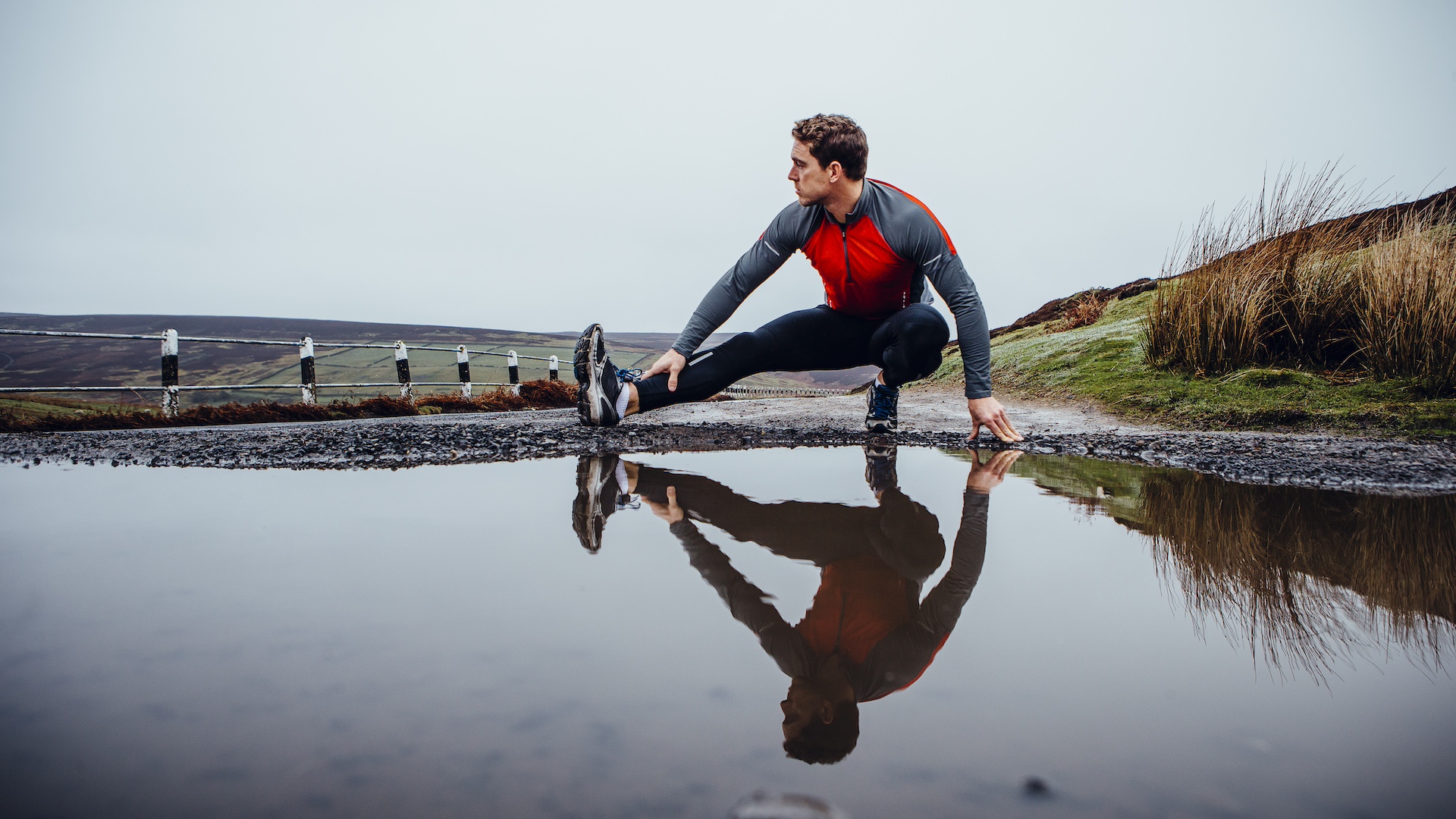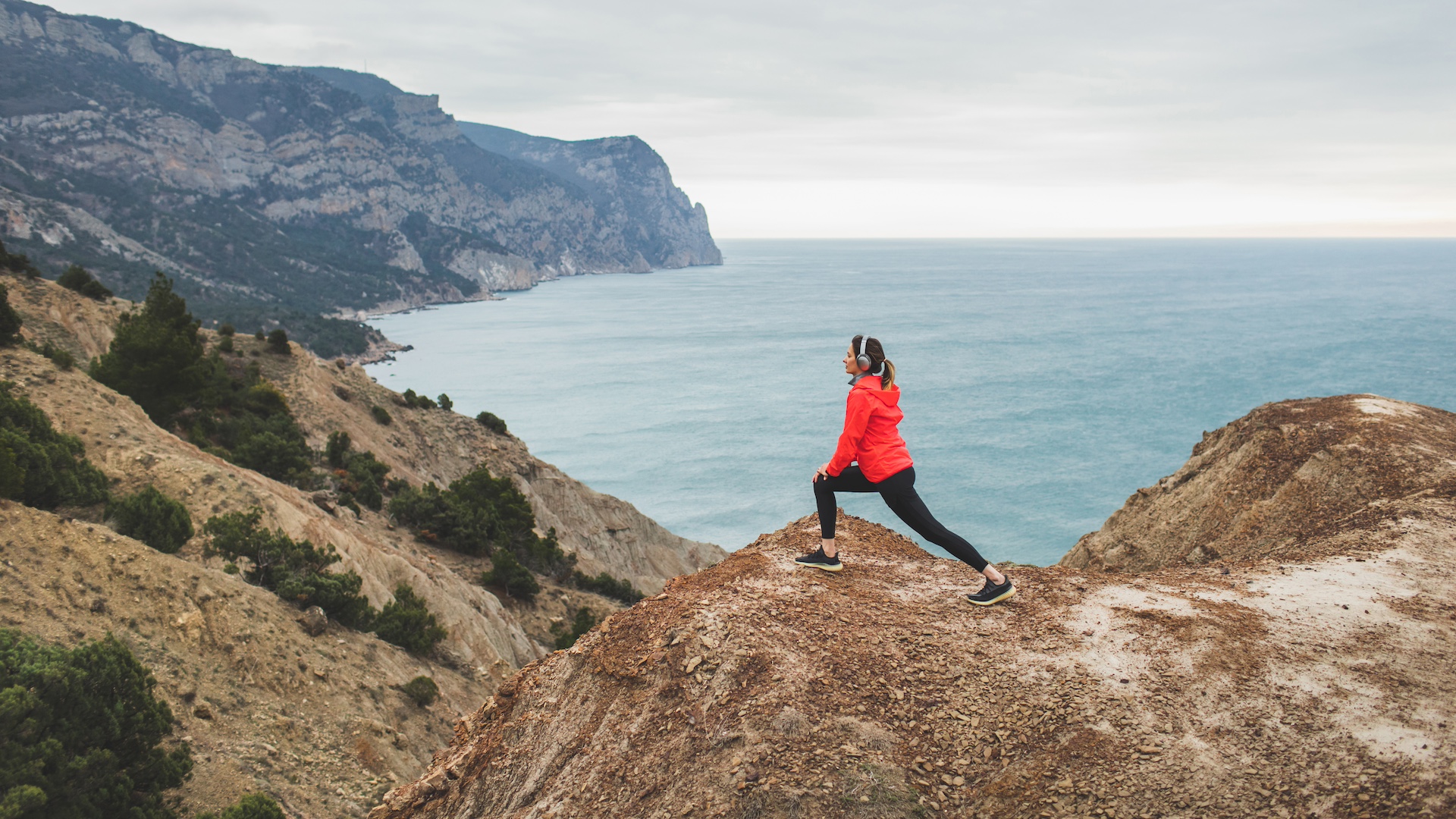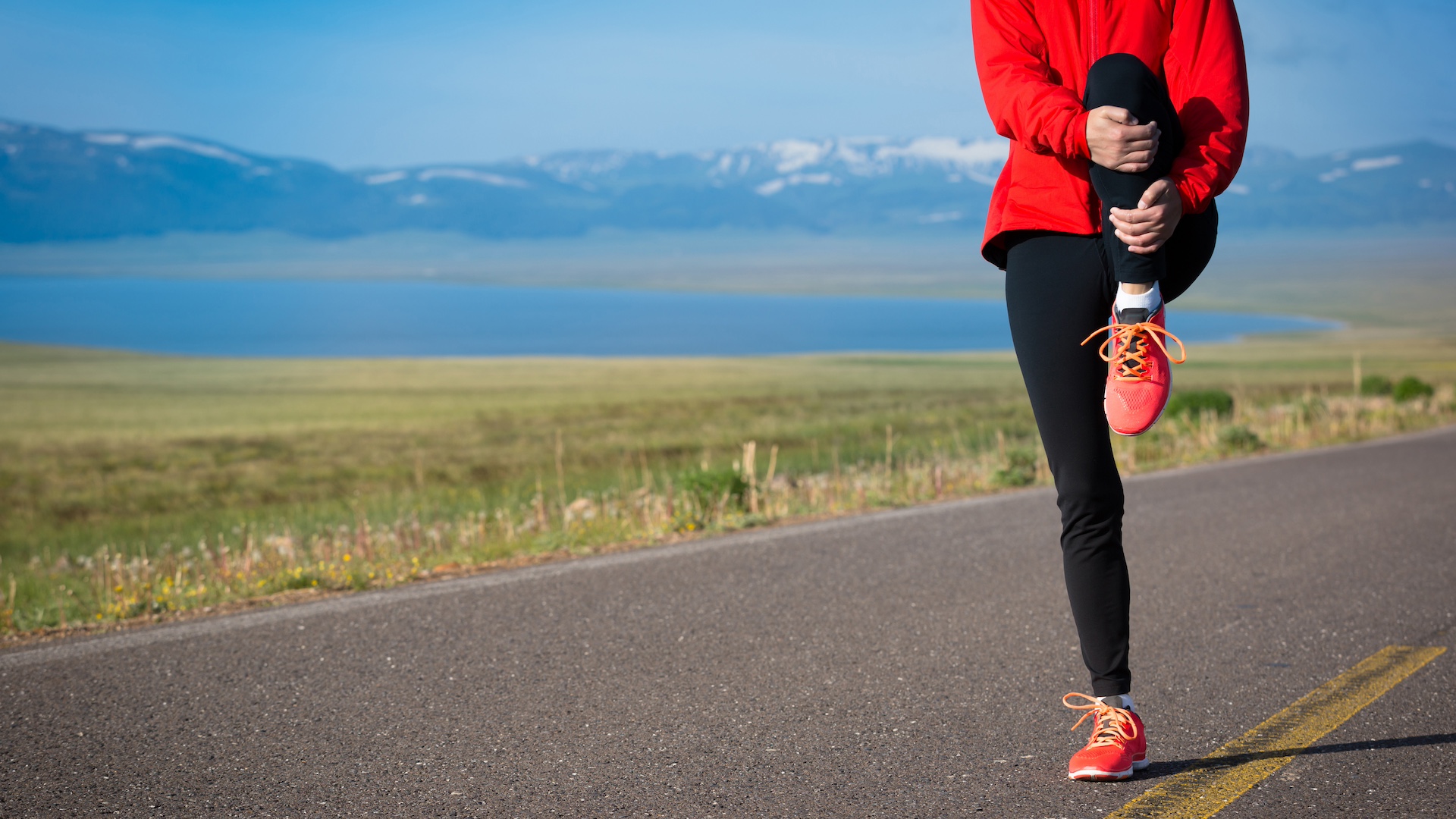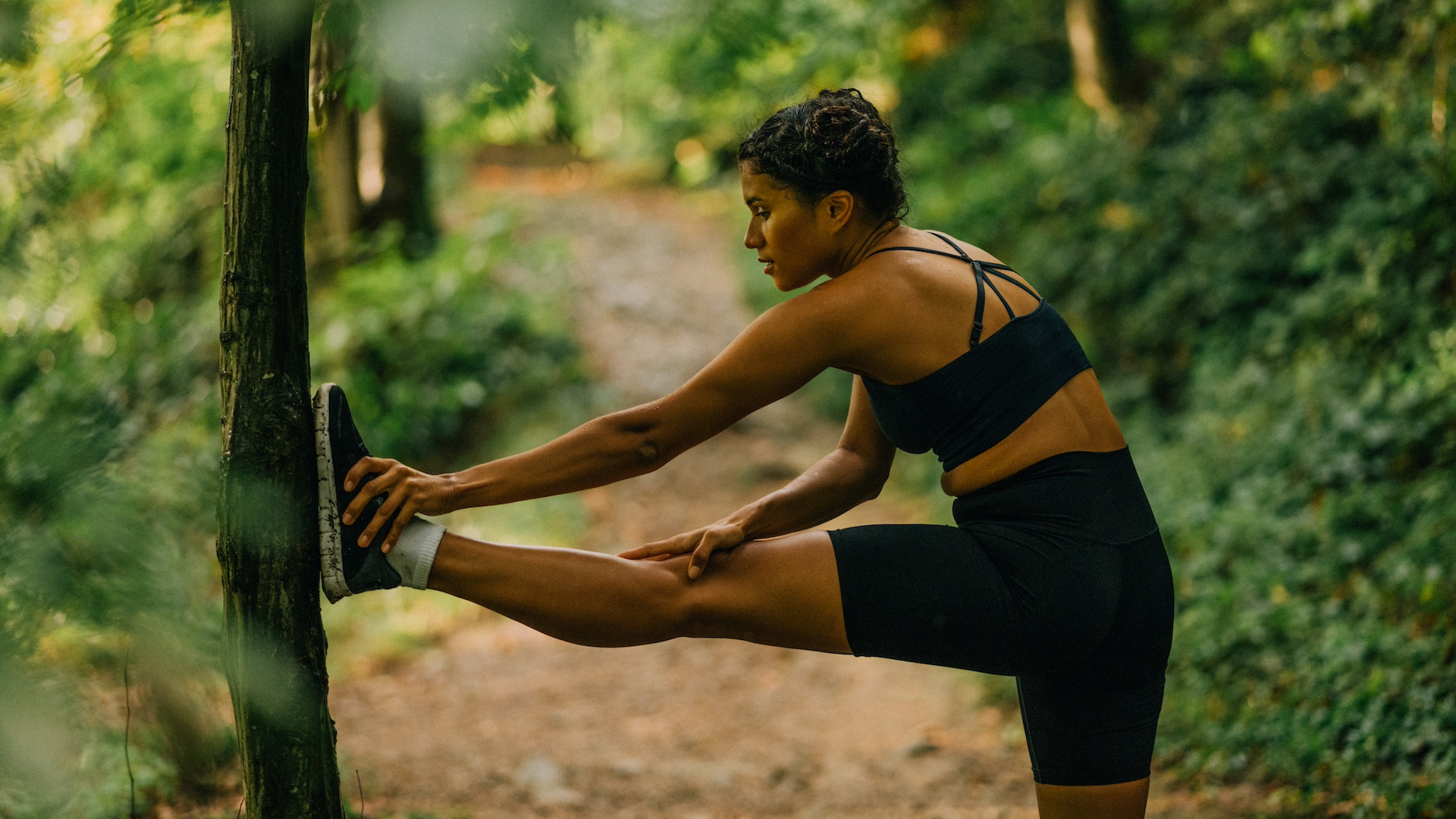
Footballers, golfers, stand-up comedians, TedTalkers and even darts players do it these days. Putting yourself through a warm-up session before training, performing or competing is de rigueur across most sports disciplines and beyond these days.
And yet, when heading out for a run – especially over potentially rugged terrain – it’s something many of us barely give a thought to. We all know it’s a bad idea not to do a warm-up at all, but many of us don’t really know exactly how much attention we should pay to our pre-run routines. “I’ll warm up those muscles as I run, anyway,” has been the approach to a warm-up for many trail runners down the years. Me included.
“A warm-up traditionally for runners is normally running the first part of their run a little slower before going in to the main ‘work out’. Or for trail runners, running until the first hill comes upon them,” says James Cruikshank, who works with trail runners at the SPEAR Physiotherapy clinic in Aberdeen. “I try to incorporate a lot more footwork into a structured warm-up prior to hitting the trails.”

And research suggests that taking just a few moments out of your run time to tune up both body and mind can provide a wealth of benefits in the short and longer term. A review published in Frontiers in Physiology in 2021 found that a single bout of stretching can improve run performance, based on parameters like time to exhaustion and VO2 max.
Further studies, published in the Journal of Human Kinetics, found that runners who incorporated a warmup into their training sessions reported the lowest recorded post-run muscle ache.
While a light jog might be enough to get the blood – and the bigger leg muscles – moving, doing some dynamic stretches of the hamstrings and quadriceps, glutes and calves can improve your sharpness and reaction to uneven ground.
Exercise specialists insist that a simple warm-up will not only help prime the body for exercise by raising your heart rate, but it’ll also help reduce your risk of injury and stave off those feelings of sluggishness and stiffness mid-run. “It’ll also better prepare you for the demands of those aforementioned hills,” adds Cruickshank.
All the latest inspiration, tips and guides to help you plan your next Advnture!

The best warm-up for running the trails
Cruickshank advises trail runners to perform a five- to seven-minute warmup based around a RAIL structure, an acronym that should be simple enough for trail runners to remember. Cruickshank explains what each letter stands for:
- R (1-2 mins) – “Focuses on specific Release, normally targeted to the outside of the hip or outside of the quadriceps.”
- A (1 min each drill) – “Activate focusses on two drills – called foot ‘Torqs’ and pronation lunges – where the runner explores the ankle and foot range of motion while transferring their body weight from their outside heel to the big toe (pivotal in runners).”
- I (1min each leg) – “Integration is linking the hip to the foot through a single-leg hinge pattern, integrating the foot with the powerful hips. A runner’s leg is is like a fishing rod; the hook is the foot and the spool is the glute – you need both to be optimal to be successful.”
- L – “The warm-up rounds off with Load – that’s your run.”
“Just like a warm cuddle, a proper warm-up routine will embrace your muscles and joints, preparing them for the intense running ahead,” says Cruickshank.
“As a sensible cool down the above sequence is repeated in reverse: LIAR – quite apt, as every client says they do one, but the jury is out,” Cruickshank jokes.
Doing dynamic stretches and gentle exercises with a gradual increase in intensity doesn’t just help your body adapt to the upcoming challenge. Another study, published in the Journal of Strength and Conditioning Research, found that when runners performed a dynamic stretching routine before a workout, they were better able to sustain a harder effort for longer than those who didn’t.

Getting in the zone
Warming up for a workout or a trail race won’t just ready your body for a run – it can help your mental focus too.
“For runners who suffer with pre-race anxiety, going through a warm-up ritual can steady the nerves and help a runner enjoy the moment,” suggests sports psychologist David Charlton.
“In the build-up to a race I recommend athletes even use journaling as part of a warmup routine. Writing down worries or doubts about your performance can help rationalize thoughts and refocus on achievable expectations.
“Writing and rehearsing affirmations like, ‘I’m going to start or finish strong,’ rather than solely outcome-based goals can warmup the mind for a race. Practising guided visualization helps too – imagine the race, including potential challenges and how to overcome them. Envision yourself warming up, maintaining confidence and finishing successfully. Tailor this to your personality – you may prefer calm, motivation-based audios, or energizing music.”

Injury prevention
Emma Kirk-Odunubi is Run Coach and Gait Educator with OOFOS active recovery shoes, and she agrees with James Cruickshank that the most effective drills for warming up for trail running involves movements that increase ankle and foot reactivity but also help with hip stability.
“When running on trails our balance and stability is challenged constantly, so making sure our hips are firing and our ankles are primed is key,” she says.
“A trail runner should look to spend 10-15 minutes warming up. This can incorporate a light hike pre-run and then flushing through the hamstrings, ankles, calves and core within the warm-up.”
For variety on the dynamic warmup Kirk-Odunubi suggests runners grab a resistance band and perform the following moves:
“Firstly, double-footed pogo jumps. Lock the ankles together and, keeping the legs stiff, jump 10 times forward and back – small jumps. Then 10 pogo jumps side to side. This can be repeated single leg to wake up the reaction of the muscles and tendons in the lower limbs.”
Secondly, it’s banded glute marches (see below). “Begin by lying down, knees bent feet on the floor. Elevate the hips and then with the small band around the feet for resistance, alternate marching the knees towards the chest while keeping the hips still and elevated. Do 8-10 reps in total.”
Kirk-Odunubi also suggests that runners don’t solely do a warm-up on a cold day. “In warmer conditions you maybe not need as long, but deceptively the body will still need warming up for the act of running – certain drills and movement patterns will be essential.”
“For icy and colder conditions, consider doing your warm-up indoors – mobilizing and doing drills on the spot – before heading out the door.” But key to preparing for trails, in Kirk-Odunubi’s book, is proprioception.
“It’s essential for trail runners more than most. A simple exercise is the single leg balance. This can be incorporated to daily life – balancing on one leg when brushing your teeth morning and evening is a simple way to build it in.” You can add difficulty by standing on a screwed-up towel also to make harder.
- Six common running pains you shouldn’t ignore
- Best warm-up for trail runners: an easy 8-minute routine
Kirk-Odunubi also recommends plyometric work within a warm-up. “Single leg hops including lateral single leg bounds (skaters) will help wake up the stabilization muscles in the ankles.”
To do these, stand with your hips flexed and your knees slightly bent. Generate force with your arms, and bound to one side by extending the ankle, knee and hip of one leg. Land softly on your lead leg and pause until balanced, then bound in the opposite direction off your opposite leg.
Combine both mind and body warm-ups and you’ll hopefully reap the rewards on every run you do.
Rob Kemp is a Dorset-based trail runner and off-road cyclist. He's written on the subject of health and fitness for over 25 years across a range of publications and websites. A former contributor to Trail Running and Outdoor Fitness magazines, his work now regularly features in The Telegraph and Cycling Weekly magazine. These days he's easing off from marathon running and devoting more time to hiking in Wales and Scotland or falling off of his bike in scenic wilds of south-west England.


